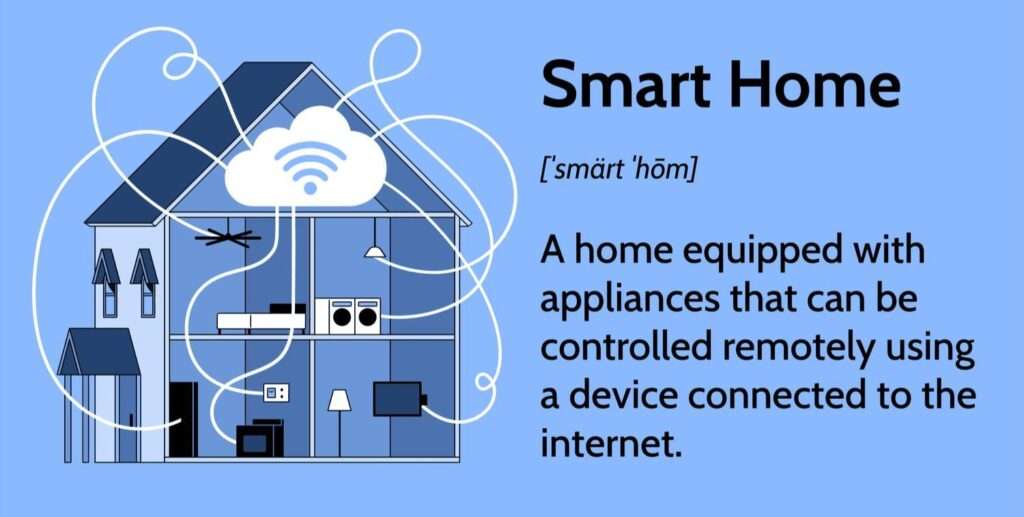
Artificial intelligence (AI) is transforming the world of business, offering new opportunities for innovation, efficiency, and growth.
But how can you measure and evaluate the performance and impact of your AI systems? How can you ensure that your AI initiatives are aligned with your business objectives and deliver the desired outcomes?
This is where AI metrics and indicators come in.
AI metrics and indicators are quantitative and qualitative measures that help you monitor, assess, and improve your AI systems.
They can help you answer questions such as:
- How accurate, reliable, and robust is your AI system?
- How well does your AI system meet the needs and expectations of your users and customers?
- How much value does your AI system add to your business processes and outcomes?
- How ethical, fair, and transparent is your AI system?
In this article, we will explore some of the best AI metrics and indicators for measuring and evaluating AI systems, and how they can help you achieve your business goals.
AI Metrics and Indicators for Accuracy, Reliability, and Robustness
One of the most important aspects of any AI system is its accuracy, reliability, and robustness.
These are the technical qualities that determine how well your AI system performs its intended function, and how resilient it is to errors, failures, and adversarial attacks.
Some of the common AI metrics and indicators for accuracy, reliability, and robustness are:
¡》Accuracy:
The percentage of correct predictions or outputs that your AI system produces, compared to the ground truth or the expected results.
For example, if your AI system is a face recognition system, accuracy measures how often it correctly identifies the faces in the images.
¡¡》Precision:
The percentage of relevant predictions or outputs that your AI system produces, compared to the total number of predictions or outputs.
For example, if your AI system is a spam filter, precision measures how often it correctly labels the emails as spam or not spam, and avoids false positives (labeling non-spam emails as spam).
¡¡¡》Recall:
The percentage of relevant predictions or outputs that your AI system produces, compared to the total number of relevant predictions or outputs.
For example, if your AI system is a spam filter, recall measures how often it correctly labels the emails as spam or not spam, and avoids false negatives (missing spam emails).
¡V》F1-score:
The harmonic mean of precision and recall, which balances both metrics and provides a single measure of performance.
For example, if your AI system is a spam filter, F1-score measures how well it labels the emails as spam or not spam, taking into account both false positives and false negatives.
V》Mean Absolute Error (MAE):
The average of the absolute differences between the predictions or outputs of your AI system and the ground truth or the expected results.
For example, if your AI system is a weather forecasting system, MAE measures how close its predictions are to the actual weather conditions, regardless of the direction of the error.
V¡》Mean Squared Error (MSE):
The average of the squared differences between the predictions or outputs of your AI system and the ground truth or the expected results.
For example, if your AI system is a weather forecasting system, MSE measures how close its predictions are to the actual weather conditions, and penalizes larger errors more than smaller errors.
V¡¡》Root Mean Squared Error (RMSE):
The square root of the MSE, which gives a measure of performance that is in the same units as the predictions or outputs.
For example, if your AI system is a weather forecasting system, RMSE measures how close its predictions are to the actual weather conditions, and gives a sense of the typical error magnitude.
V¡¡¡》Confidence Interval (CI):
The range of values that contains the true value of a parameter or a statistic with a certain probability.
For example, if your AI system is a weather forecasting system, CI measures the uncertainty of its predictions, and gives a range of possible weather conditions that are likely to occur.
X》Reliability Diagram:
A graphical representation of the relationship between the confidence or probability of the predictions or outputs of your AI system and the actual accuracy or frequency of those predictions or outputs.
For example, if your AI system is a weather forecasting system, a reliability diagram shows how well its confidence levels match the actual weather outcomes, and reveals any overconfidence or under confidence of the system.
¡X》Robustness Score:
A measure of how well your AI system maintains its performance and functionality when faced with changes, variations, or perturbations in the input data, the environment, or the system itself.
For example, if your AI system is a face recognition system, robustness score measures how well it handles different lighting conditions, angles, expressions, occlusions, or adversarial attacks.
These AI metrics and indicators can help you evaluate the accuracy, reliability, and robustness of your AI system, and identify any areas of improvement or optimization.
They can also help you compare your AI system with other AI systems or benchmarks, and demonstrate its value and quality to your users and customers.
AI Metrics and Indicators for User and Customer Satisfaction
Another important aspect of any AI system is its user and customer satisfaction.
These are the human-centric qualities that determine how well your AI system meets the needs and expectations of your users and customers, and how satisfied they are with their experience and interaction with your AI system.
Some of the common AI metrics and indicators for user and customer satisfaction are:
¡》Net Promoter Score (NPS):
The percentage of users or customers who are likely to recommend your AI system to others, minus the percentage of users or customers who are likely to detract from your AI system.
For example, if your AI system is a chatbot, NPS measures how likely your users or customers are to refer your chatbot to their friends or colleagues, and how loyal they are to your chatbot.
¡¡》Customer Satisfaction Score (CSAT):
The percentage of users or customers who are satisfied or very satisfied with your AI system, based on a rating scale.
For example, if your AI system is a chatbot, CSAT measures how satisfied your users or customers are with the quality and usefulness of the chatbot’s responses, and how well the chatbot solves their problems or answers their questions.
¡V》Customer Effort Score (CES):
The percentage of users or customers who agree or strongly agree that your AI system made it easy for them to achieve their goals, based on a rating scale.
For example, if your AI system is a chatbot, CES measures how easy your users or customers find it to interact with the chatbot, and how much effort they have to put in to get the desired results.
V》User Experience Score (UXS):
The percentage of users or customers who rate your AI system positively on various aspects of user experience, such as usability, functionality, design, aesthetics, accessibility, and engagement.
For example, if your AI system is a chatbot, UXS measures how user-friendly, intuitive, attractive, and engaging your chatbot is, and how well it fits the context and purpose of the user or customer.
V¡》Sentiment Analysis:
The process of extracting and analyzing the emotions, opinions, attitudes, and feelings of your users or customers from their feedback, reviews, comments, or messages.
For example, if your AI system is a chatbot, sentiment analysis can help you understand how your users or customers feel about your chatbot, and what aspects of your chatbot they like or dislike.
V¡¡》Conversation Quality:
The measure of how effective, efficient, and satisfying your AI system’s conversations are with your users or customers, based on various criteria, such as relevance, coherence, clarity, fluency, responsiveness, and personalization.
For example, if your AI system is a chatbot, conversation quality can help you evaluate how well your chatbot communicates with your users or customers, and how well it adapts to their needs and preferences.
These AI metrics and indicators can help you measure and improve the user and customer satisfaction of your AI system, and identify any gaps or pain points in their experience and interaction with your AI system.
They can also help you increase the retention, loyalty, and advocacy of your users and customers, and enhance your brand reputation and trust.
AI Metrics and Indicators for Business Value and Impact
The ultimate goal of any AI system is to add value and impact to your business processes and outcomes.
These are the strategic qualities that determine how well your AI system contributes to your business objectives and goals, and how much benefit it brings to your business performance and growth.
Some of the common AI metrics and indicators for business value and impact are:
¡》Return on Investment (ROI):
The ratio of the net profit or benefit that your AI system generates to the total cost or investment that your AI system requires.
For example, if your AI system is a chatbot, ROI measures how much revenue or cost savings your chatbot produces, compared to how much money or resources you spend on developing, deploying, and maintaining your chatbot.
¡¡》Key Performance Indicators (KPIs):
The specific and measurable objectives or targets that your AI system aims to achieve, aligned with your business goals and strategy.
For example, if your AI system is a chatbot, some of the KPIs could be the number of users or customers, the conversion rate, the retention rate, the average order value, the customer lifetime value.
These KPIs can help you track and evaluate the progress and success of your chatbot, and adjust your strategy and tactics accordingly.
¡¡¡》Business Impact Analysis (BIA):
The process of identifying and quantifying the potential effects and consequences of your AI system on your business operations, processes, functions, and stakeholders.
For example, if your AI system is a chatbot, BIA can help you assess how your chatbot impacts your customer service, sales, marketing, product development, human resources, and other business areas, and how it affects your revenue, costs, risks, opportunities, and competitive advantage.
¡V》AI Value Chain:
The framework of the activities and processes that are involved in creating, delivering, and capturing value from your AI system, from data collection and preparation, to model development and deployment, to user and customer interaction and feedback.
For example, if your AI system is a chatbot, the AI value chain can help you understand how your chatbot creates value for your business and your users and customers, and how you can optimize each stage of the value chain to maximize that value.
These AI metrics and indicators can help you measure and demonstrate the business value and impact of your AI system, and justify your investment and resources on your AI system.
They can also help you align your AI system with your business strategy and goals, and optimize your AI system for maximum performance and growth.
Conclusion
AI metrics and indicators are essential for measuring and evaluating AI systems, and ensuring that they deliver the desired results and outcomes.
They can help you monitor, assess, and improve the technical, human-centric, and strategic aspects of your AI system, and achieve your business goals.
In this article, we have explored some of the best AI metrics and indicators for measuring and evaluating AI systems, and how they can help you:
- Evaluate the accuracy, reliability, and robustness of your AI system, and identify any areas of improvement or optimization.
- Measure and improve the user and customer satisfaction of your AI system, and identify any gaps or pain points in their experience and interaction with your AI system.
- Measure and demonstrate the business value and impact of your AI system, and justify your investment and resources on your AI system.
We hope you found this article useful and informative, and that it will help you leverage AI metrics and indicators to enhance your AI system and your business.
If you have any questions, comments, or feedback, please feel free to share them with us. We would love to hear from you. Thank you for reading.
RELATED ARTICLES
- How Artificial Intelligence, AI Applications and Use Cases for Travel and Tourism are Revolutionizing the Industry
- The best AI tools and demonstrations to try out
- How AI is Changing Education and Career Paths for Everyone
- How AI is shaping the culture and society of the world









